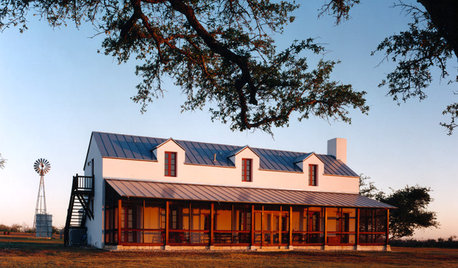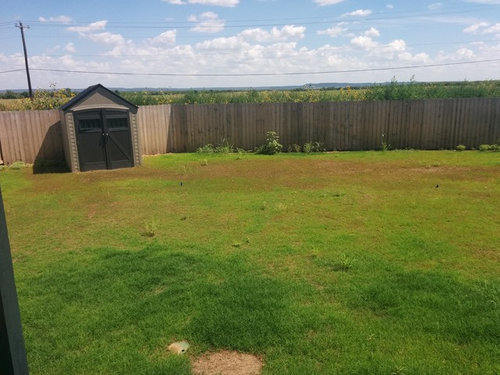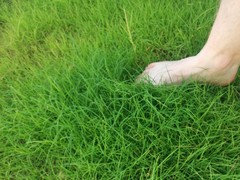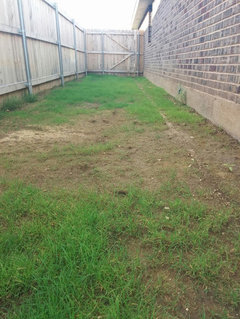Next steps for new Bermuda lawn from seed (West Texas)
tenacity24
8 years ago
Featured Answer
Sort by:Oldest
Comments (11)
Related Professionals
Holly Springs Landscape Architects & Landscape Designers · Woodinville Landscape Architects & Landscape Designers · Beachwood Landscape Contractors · Bridgeview Landscape Contractors · Cicero Landscape Contractors · Dedham Landscape Contractors · Federal Way Landscape Contractors · Fort Worth Landscape Contractors · Hickory Hills Landscape Contractors · Long Beach Landscape Contractors · Middletown Landscape Contractors · Parker Landscape Contractors · Salem Landscape Contractors · South Portland Landscape Contractors · Vacaville Landscape Contractorstenacity24
8 years agobic9
8 years agoWes
8 years agobic9
8 years agoWes
8 years agotenacity24
8 years agodchall_san_antonio
8 years ago
Related Stories

GARDENING GUIDESHow to Plant a New Lawn From Sod
Take the quick-start route to turf with sod; these installation guidelines will help ensure a healthy and long-lasting lawn
Full Story
HOUZZ TOURSHouzz Tour: Unplugging From High Tech in a Texas Farmhouse
This simply styled home gives an Austin family all the warmth of comfort food and all the amenities of modern times
Full Story
GARDENING GUIDESHow to Prep Your Ground for a Healthy New Lawn
Seed or sod that falls on weedy, lumpy soil is a wasted effort. Follow these steps to ensure that your new lawn will thrive
Full Story
SAVING WATERHouzz Call: Are You Letting Go of Your Lawn?
Many facing a drought are swapping turf for less thirsty plantings. If you’re one of them, we’d like to hear about it
Full Story
GREAT HOME PROJECTSHow to Replace Your Lawn With a Garden
New project for a new year: Lose the turfgrass for energy savings, wildlife friendliness and lower maintenance
Full Story
FARMHOUSESHouzz Tour: German Tradition Deep in the Heart of Texas
Rooted in architecture from the 1800s, this award-winning home mixes history with the vernacular of today
Full Story
BEFORE AND AFTERSSee 6 Yards Transformed by Losing Their Lawns
Wondering whether a turf lawn is the best use of your outdoor space? These homeowners did, and they found creative alternatives
Full Story
LANDSCAPE DESIGNGet Along With Less Lawn — Ideas to Save Water and Effort
Ditch the mower and lower your water bill while creating a feast for the eyes with diverse plantings and gathering places
Full Story
EARTH DAYThe Case for Losing the Traditional Lawn
Work less, help the environment and foster connections by just saying no to typical turf
Full Story
LANDSCAPE DESIGN15 Great Ideas for a Lawn-Free Yard
End the turf war for good with hardscaping, native grasses and ground covers that save water and are easier to maintain
Full StoryMore Discussions











t_d_harvey